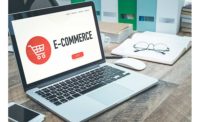If you're a newbie to the concept of what it takes to win more business "through" or "on" the internet (yes, there is a difference), your biggest takeaway at this point in time should be that you or somebody at your company must know how to navigate and maximize this type of information, if you desire to be considered an impact player in your marketplace, at the specific time an online-searcher is looking for a solution that your company can offer and sell to them.
If you're a bit of a seasoned veteran and understand the fancies and inner workings of how the internet channel works, then you're likely looking to maximize the metrics that matter most, scale growth and profit generation, control more market share, and position your company as the go-to authority at the exact second a searcher is looking for a solution you have in-stock or that you can get for them, you're already well aware that "wishing and hoping" that a searcher will first find your website, then reach out to your company, after scrolling past handfuls of other options on the first page of Google, simply isn't going to cut it in today's economy.
Truth be told, you must have an ironclad understanding of where you're showing up on the first page of Google, how frequently, and who else is "ranking" there if it is not your company. Once this formula is known, it's time to take strategic action so that you are driving the bus and taking control of your company's destiny online.
ONE LEAP FORWARD, TWO SMALL STEPS BACKWARD
To help you and your team get educated, here are the top three questions and scenarios we get asked about from just about everybody we connect with:
1) "Why do we need Google Ads if we have people coming to our website organically?"
The first reason is that a web searcher with a high intent to buy wants what they want, right now, and this typically does not involve stumbling across a website or finding you by chance. Web searchers who are serious about finding a solution to their unmet need(s) know exactly what they're looking for, they're not simply scrolling for the sake of scrolling. So, you must respect their time and provide them with exactly what they're looking for, or they'll be heading elsewhere.
The second reason Google Ads (and other advertising platforms online) are beneficial is because they give you access to analyzing data that is not available for the "set it and forget it," free listings. In other words, unless you're willing to "pay to play," you will never be able to gain access to the type of game-changer information that will help you gain a significant amount of visibility, scale profits and grow your online footprint in the most data-driven and predictable ways.
2) "What are the best ways to calculate our results and ROI from the internet channel?"
Regardless if a searcher reaches you from an organic search, paid ad, via social media, or from a dealer location feature on a manufacturer's website, or any other method of making it to your website, you're company's ability to calculate the results you're getting from the web will only be as good as the tracking mechanisms you're using, the technologies you have integrated into your website, and the specific goals you have set up and are tabulating each month on the back-end of Google Analytics.
The success axiom, "If something isn't being measured, it cannot be improved or scaled," fits the bill in this situation.
Measuring everything and getting as granular as you possibly can with the data sets you are using to make decisions, is the best advice we offer to inquiring minds.
3) "We don't want to compete with Amazon, Wayfair, Build, Grainger, or any other online marketplace or big box retailer!"
First, the irony here is that the largest bucket of revenue we see being generated all over the United States and Canada is coming from local distribution businesses with a brick-and-mortar aspect to their business. You must realize that being a local business with a brick-and-mortar footprint is one of your top competitive advantages because online retailers do not have a physical distribution center where people can access and order their products in real-time.
Is the Internet more convenient than visiting a brick-and-mortar supply house or showroom?
It can be, sometimes. However, consumers know that when they can touch, see, sample, and get their questions answered by a product expert who has their back, they are saving an enormous amount of time and gaining confidence that they're in control of the process vs letting the internet steer them wrong. When a consumer is working with somebody in the trade (i.e., a builder, architect, designer, etc.), they get excited to visit a showroom or supply house and learn how they're going to spend their allowances and learn about the different options available to them.
One tactic supply houses and showrooms have found helpful is to rigorously study the advertising footprint of the online retailers showing up in their service area as well as look at what their local competitors are doing and saying in their messaging so that they're able to out think, out position, out strategize, out market, and outperform their competition before ever blindly spend another dollar on business development or acting irresponsibly again.
FORMULA FOR ORGANIC VISIBILITY
A term and concept that marketing teams, advertising agencies, and consultants of all kinds use frequently these days is to set a "marketing roadmap" before you chart your company's course of action. So, if you or your team is looking to become a bigger fish by navigating your market's "online ocean" in a more disciplined, data-driven way, you are going to want to know where you stand within the market before taking action.
We've yet to find a business that doesn't love to get a referral.... because getting a referral doesn't directly cost us anything!
However, what businesses often overlook when it comes to the internet channel is analyzing how much "free" traffic they're getting visibility for in their market.
To better gauge where you stand through the eyes of Google, here is a simple 3-step formula you can use to know just how many eyeballs are seeing you on Google, for free.
Step #1 - Set up a small Google Ad campaign for your top 10 brands, top 10 product categories, and top 5 terms that showcase you as a brick-and-mortar option in the market. The brand and product category terms to use are self-explanatory and 100% your call. As for the brick-and-mortar terms, you can start by using a plumbing supply, bath or bathroom showroom, kitchen design center, kitchen or lighting Showroom, and plumbing store.
Truth be told, a business can create an ad online for any term they want + when it comes to pay-per-click, you only pay when an ad is clicked.
However, once you get rolling, the Pareto Principle will kick in and you will find that 20% of your search terms will be yielding 80% of the results and ROI.
Step #2 - With just a nominal budget of let's say less than $500, run the Google Ad campaign in five to 10 zip codes that are either your most profitable or most desirable areas.
Once you hit the "go button" on the campaign, you will see how many searchers there are in these 5-10 zip codes looking for the specific terms you are advertising for.
This will give you your market share percentage, which can also be referred to as your "Search Impression Share."
Step #3 - Go into your Google Analytics account and see how many unique visitors your website had and compare that to your Google Ad account's Search Impression Share.
If your Google Ad account had 250 visitors for $500 spend (which would equate to $2 per click), and if this was 20% of the market seeing your ad, you would know there was 5X more traffic available for you to show up in front of - if you desired to show to 100% of the market you were advertising to.
On the contrary, if your Google Analytics account says you had 250 in-state organic visitors reach your site, which is different from the 1,500 total visitors Google Analytics may be saying your site had (FYI, this is just an example), you would know that your site is only reaching 20% of the market organically.
So why would we discount and eliminate 1,250 of the 1,500 total organic visitors? It's because this number is a "vanity metric" and likely consists of robots that are scrolling your site to do what the search engines call indexing. However, a robot is never going to buy from you - especially if they are out of state and you don't have eCommerce on your site.




